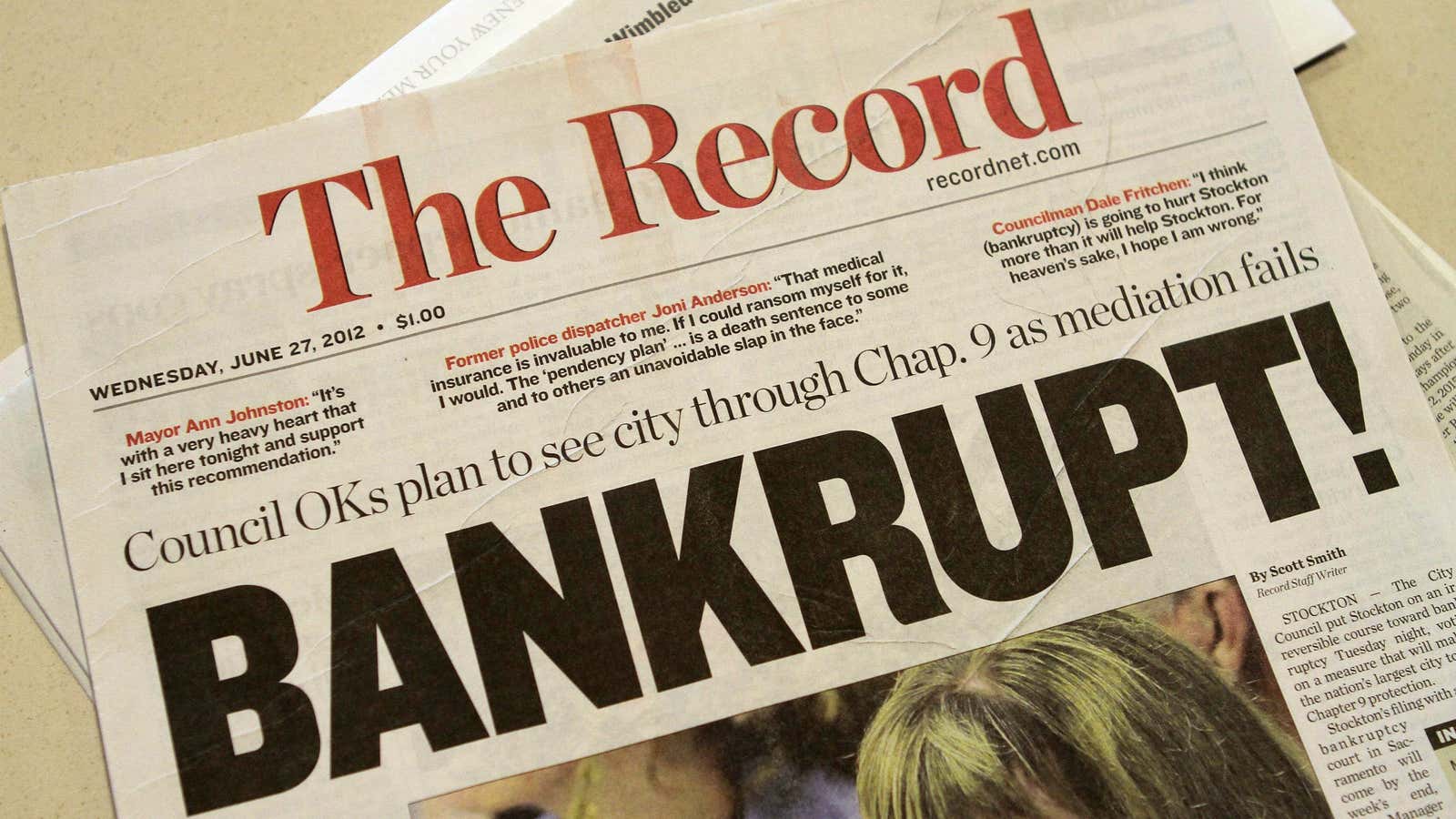Over the past 10 years, hundreds of local newspapers in the US have shut down, merged, or ceased publishing daily. Some of the impact of this has is hard to quantify, such as the potential effects on local activism, democracy, and governance. Professors at the University of Notre Dame and the University of Illinois at Chicago have found a direct financial impact (pdf): local newspaper closures have led to a deterioration in the public finances of the cities where they were based.
Between 1996 and 2015, the professors identified 204 US counties were the number of newspapers fell to two or fewer. They then looked at what happened to municipal bond yields in these counties, compared with counties where the number of newspapers didn’t decline. (Counties without newspapers were stripped out of this study).
They found that three years after a newspaper closed, counties faced higher borrowing costs: municipal bond yields increased by between 0.05 to 0.11 percentage points more than in counties without closures. Investors demanded higher yields in particular for revenue bonds, which are backed by the money made from specific projects such as toll roads, and are traded more than general obligation bonds.
The professors compared neighboring counties with similar populations to try and strip out broader economic factors. They suggest that municipal finances worsen because the closure of local media outlets allows officials to become less efficient. Without local reporters poking around, local governments aren’t monitored as closely. What results is higher government wages, more government employees, and higher taxes.
The research cites tales of dodgy tax deals, conspiracies to evict low-income families, and outright theft by local officials (pdf) going unchecked in the absence of local media coverage. The researchers also argue that online media has not been a sufficient substitute to fill the gaps left by newspaper closures. They suggest that online media companies could contract out more work to local reporters to maintain the coverage that’s lost when dedicated local outlets disappear.
